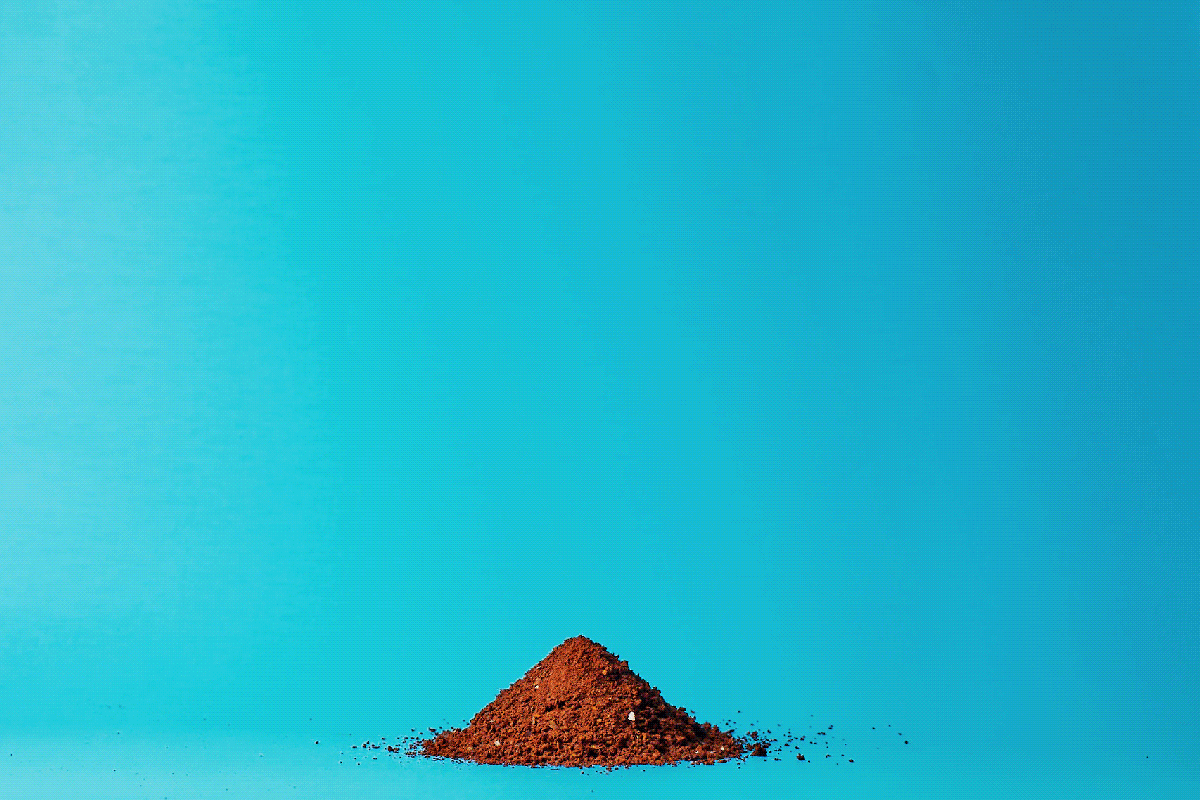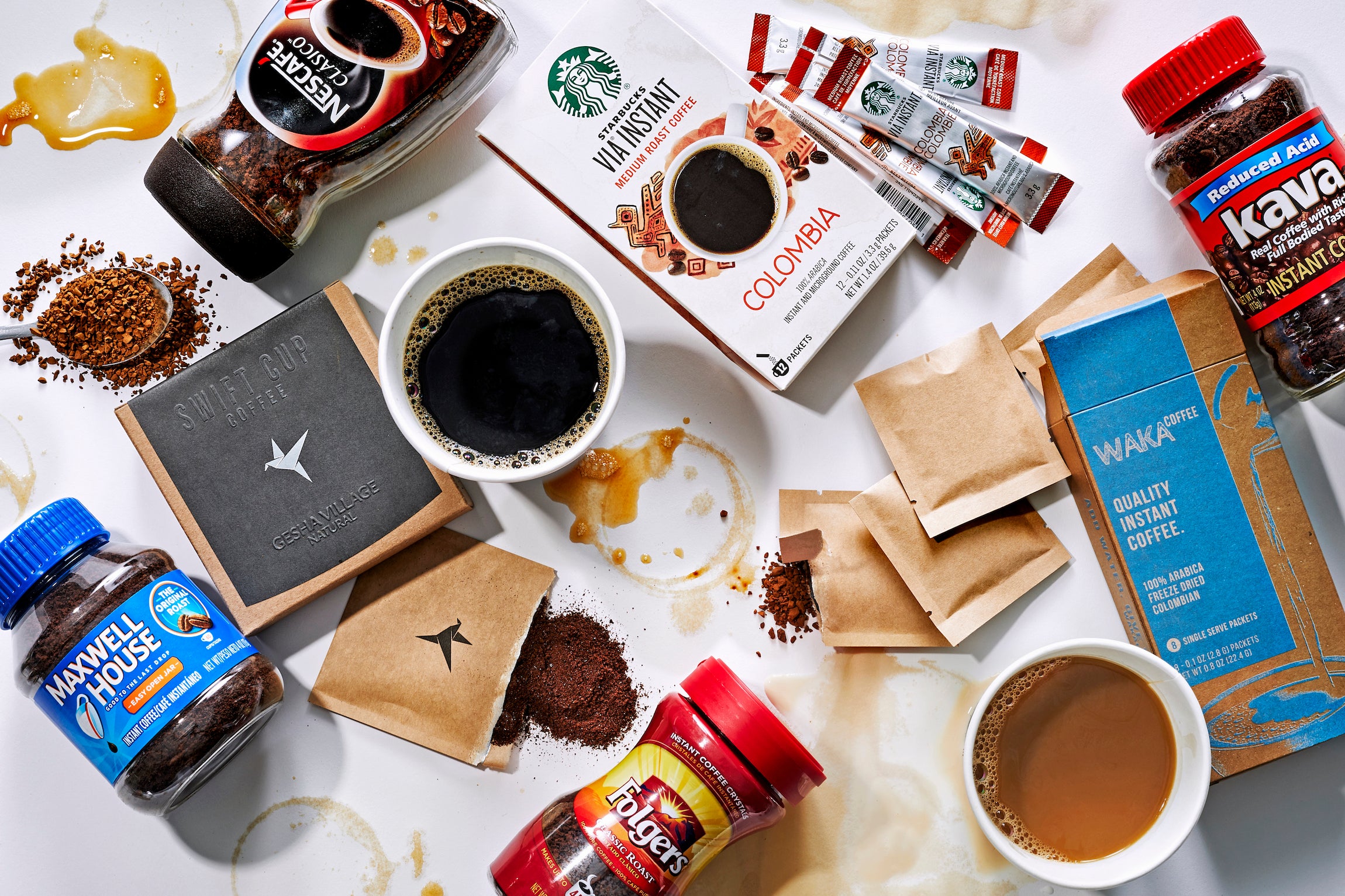
A handful of new companies are challenging the norm for instant coffee that we’ve accepted for more than a hundred years.
If you’ve camped, worked at an office before the dawn of Keurig machines, or traveled to a part of the world that wakes up with black tea in the morning, you’ve probably depended upon instant coffee to ward off the oncoming headache of caffeine addiction. You’ve probably ripped open a little plastic packet of individually portioned granules, tipped the contents into a Styrofoam cup of hot water, and stirred the mixture into a watery pale brown foam, wondering, What is this stuff? And why does it taste so bad?
“I think it has a bad rap because, in a lot of respects, it deserves a bad rap. It’s not good,” says Nate Kaiser, the founder of Swift Cup Coffee. Swift Cup is one of a handful of new companies, including Waka, Sudden, and Voila, trying to rethink instant coffee and break it out of its stigma as a last-resort convenience item.
But how good can instant coffee actually be, at its best? Improvement, it turns out, comes down to two simple (albeit expensive) tweaks to the process major food manufacturers have been using for the past hundred-plus years to make our instant coffee.
Instant coffee starts out as real, live, liquid coffee before being transformed into a powder. It turns out, if you start with pretty gross coffee, as many large brands do, the instant coffee that results from it will be pretty gross. If you start with high-quality coffee, the instant coffee will be—well, a little better. “Instant coffee is never going to be better than the coffee you start with,” says Kaiser. Kathi Christensen, a brand manager who works on Starbucks VIA instant coffee, echoes this: “You can’t preserve flavor that’s not there.”

The process of preserving flavor starts with dehydrating this liquid coffee. In the case of most household brands, this means spraying massive amounts of concentrated coffee into a warm, dry chamber, where each tiny droplet is dehydrated in midair and the remaining solids are collected as they fall to the bottom of the chamber. It’s the same way companies make powdered eggs, powdered milk, and powdered dyes. This method is the cheapest and most efficient way to dry large quantities of liquid, but the intense heat comes at a cost.
“It sacrifices the taste,” says David Kovalevski, the founder of Waka Coffee. “If you apply heat, it changes the chemicals in the bean, and then you have the burnt taste like you have in other traditional brands.”
Waka and Swift Cup both use freeze-drying—a much more expensive method that also preserves a lot more flavor. This is the method used to make astronaut ice cream, lightweight camping food, and those crunchy dried strawberries that are in your Special K Red Berries cereal. Starbucks, which guards its production method closely, is rumored to use a combination of freeze-dried coffee concentrate and actual finely ground coffee for a little added boost of flavor and aroma. When pressed for details on the process, Christensen could only confirm that it is a “unique and proprietary process.”
But even on a massive scale, for a company like Starbucks that can support its own production plant, making above-average instant coffee is not cheap. Starbucks VIA instant coffee works out to about $.80 a cup. A Waka cup works out to cost the consumer about $1.40. A Swift Cup will set you back about $2.30 per serving. By comparison, Folgers instant coffee runs about 5 cents per cup.
Still, Kaiser and Kovalevski see a growing market for people willing to pay for better-quality instant. Kovalevski is from Israel, where instant coffee is much more common, but he saw opportunity for a growing industry in the U.S. “The instant coffee industry in the U.S. is $3.3 billion,” he says. “People don’t realize that a lot of people still drink instant coffee.”

When he started Waka, his demographics skewed older—toward an audience between 40 and 60 who were already accustomed to instant coffee. But he’s found that more and more consumers in their 20s and 30s are taking the bait of convenience, bringing instant coffee to college or to work with them. Christensen experienced a similar surprise with the audience for VIA. “Surprisingly, although instant coffee historically has been really resonant with older demographics,” she says, “VIA is a product that really resonates with younger consumers who grew up with high-quality coffee.”
Kaiser sees it as part of a larger demand for quality with convenience. “Even when convenience is part of the equation—people just have a higher expectation that things are going to be better,” he says. “I would also say that quality coffee—specialty coffee—is a relatively new concept in the world, within the last couple decades, and instant coffee has been around for a century. It’s not a new thing.”
Swift Cup has partnered with a few dozen independent coffee roasters to manufacture instant coffee blends of their roasts. Tandem Coffee in Portland, Maine, Belleville in Paris, and Joe Coffee in New York are just a few. Part of the appeal to roasters may be the novelty of being able to calcify (almost literally) a perfectly brewed cup of their coffee.
“You’re trying to extract these flavors out of the coffee, and there’s a lot of variables in play,” says Kaiser. “Things like how your coffee is ground, the quality of water you’re using, how hot your water is. And some pod machines do an OK job. A lot of coffee makers do a good job. But I would say with instant, what we have the ability to do is eliminate those variables at play.”